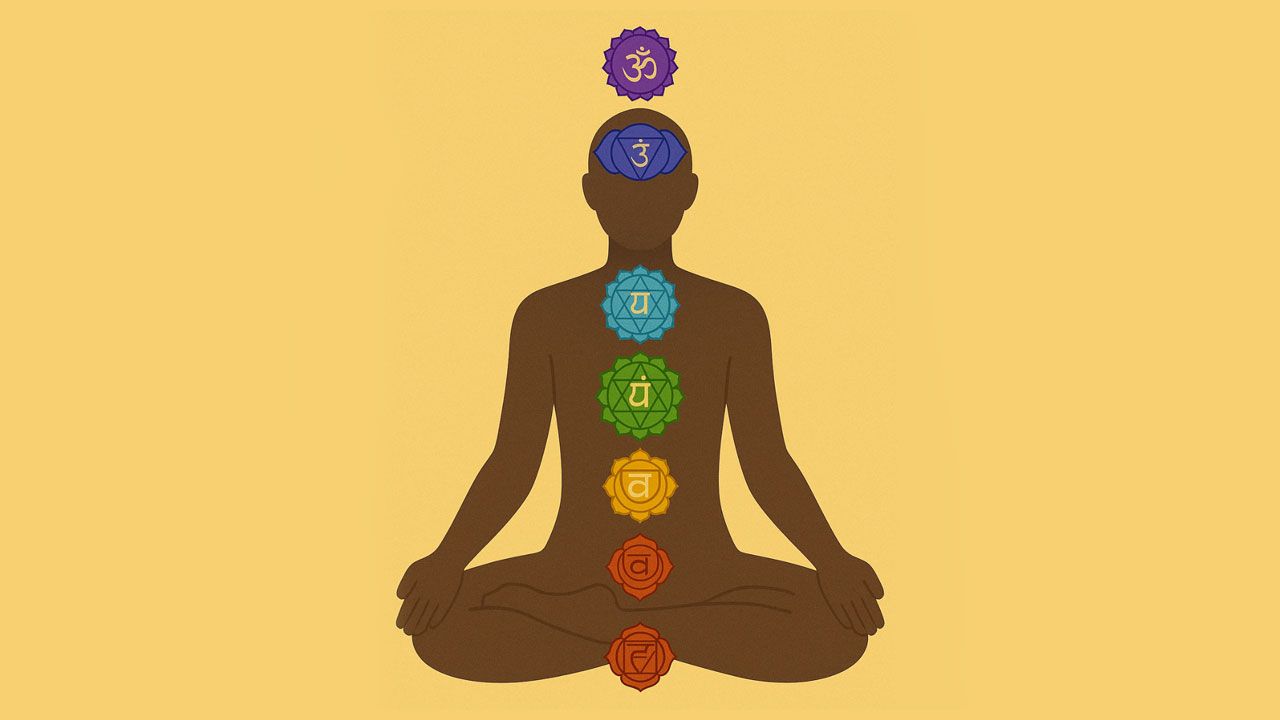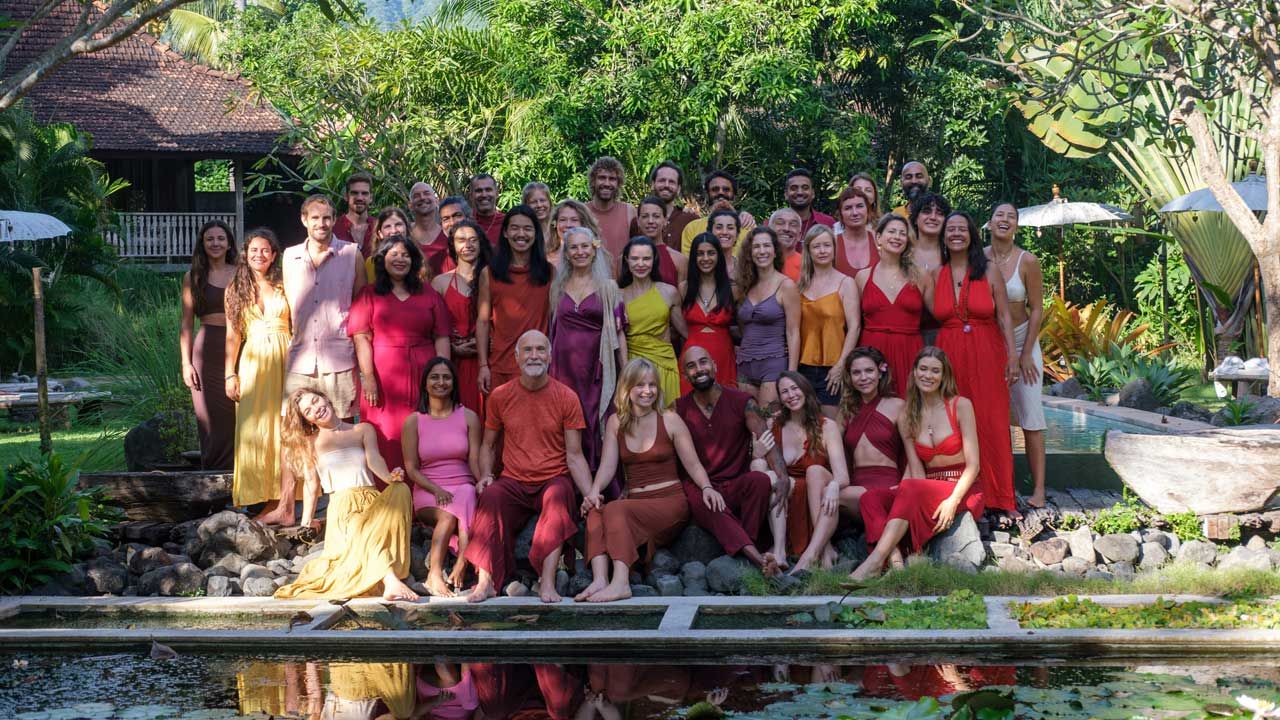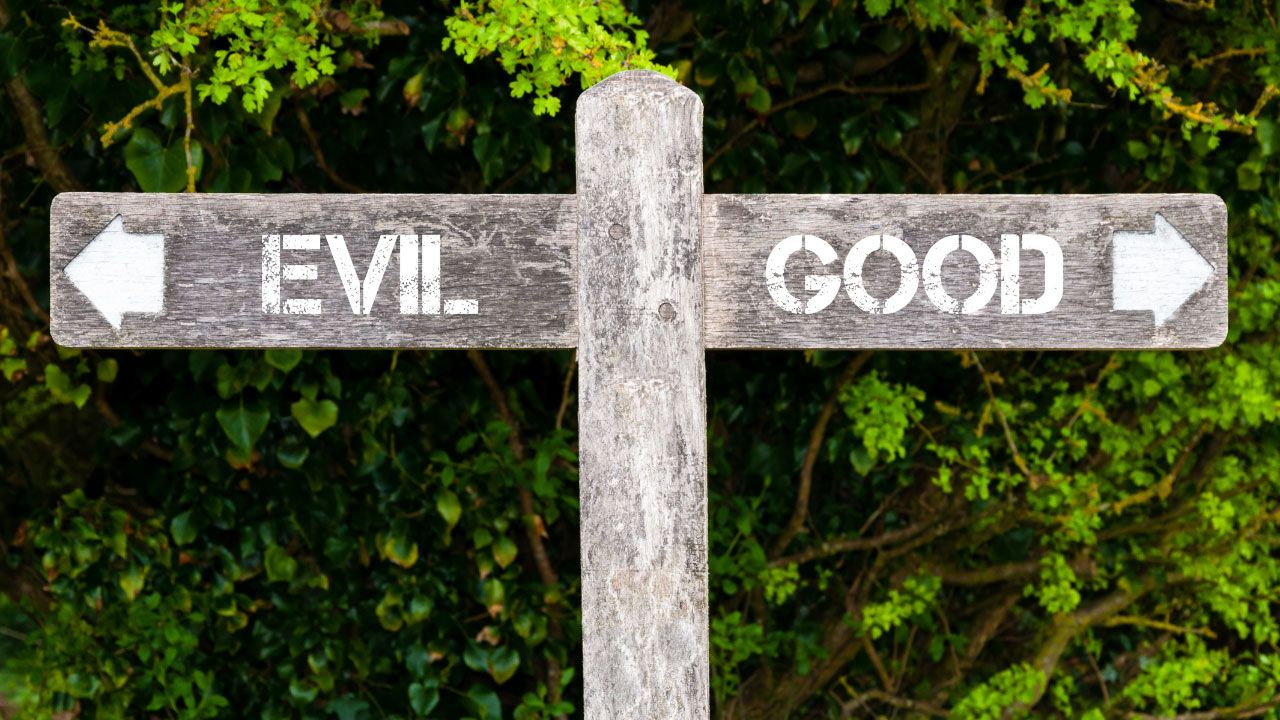What Is Tantra? A Guide to Understanding This Sacred Tradition
Jul 05, 2024
Tantra is an art, a science, a spiritual path and a lifestyle. It is a path of transformation with roots going back to shamanic traditions and the origins of yoga. It is a path of expansion, embracing all facets of life. Unlike some other traditions Tantra accepts sexual energy and may use it as a route to higher consciousness, but that is just one facet among many.
What Is Tantra?
View this post on Instagram
At its essence, Tantra is a sacred tradition that honors the divinity within each of us and all aspects of the human experience.
For over 26 years, I immersed myself in the Tantric philosophies of India before moving to Europe in 1999. There, I was amazed to find how misunderstood and oversimplified Tantra had become in the Western world.
This article aims to shed light on the true depth and transformative potential of the Tantric path - one that weaves together meditation, emotional openness, sensual awakening, and sacred ritual into an ecstatic embracing of our full and vibrant humanity as a portal to the divine.
Tantra's methods don't bypass our raw humanness, but provide a map for transmuting those parts of ourselves we might shun into the deepest spiritual nectar.
Tantra Name Meaning
Tantra is a Sanskrit word which means, to weave, to transform through methods, and to transform poison into nectar. The basic concept of this life approach is that each human being is a reflection of the entire cosmos.
By entering inside one’s own subjective being with a witnessing consciousness, all aspects of the body / mind and emotions are revealed in their refined potential. The refined potential of every human being is divine. Therefore, in Tantra, the whole person is accepted as divine.
Classical Tantra
Tantra has its roots in the spiritual traditions of India and South Asia, with its earliest textual references dating back over a millennium ago. The historical development of classical Tantra was influenced by various Hindu and Buddhist philosophies, synthesizing elements from Shaivism, Shaktism, Vaishnavism and Yoga.
At its core, classical Tantra teaches that the material world and divine consciousness are inseparably united. Core practices include meditation, visualizations, mantra recitation, and ritual.
Some of the key source texts and scriptures that codified the teachings of classical Tantra include the Kularnava Tantra, Vigyan Bhairav Tantra, Mahanirvana Tantra and the Buddhist Guhyasamaja Tantra. These esoteric and ancient texts expound upon tantric metaphysics, deities, mantras, yantras, mudras and other multifaceted practices within various Tantric lineages and traditions.
Neo Tantra
While classical Tantra has ancient roots, Neo Tantra emerged as a modern interpretation and application of tantric principles in the 20th century, especially in the West. As Eastern spiritual traditions met with the social movements and changing values of the 1960s-70s counterculture, certain aspects of Tantra were adopted and recontextualized in novel ways.
Neo Tantra tends to be more simplified and accessible. There is also a greater emphasis on human sexuality, relationships and personal growth compared to the emphasis on spiritual transcendence in the classical traditions.
Some of the prominent figures who helped shape Neo Tantra include my teacher, Osho, who taught incorporating Tantric teachings of mindfulness and meditation into everyday life including sexual experiences. In the West, teachers like Margot Anand, Jeffrey Hopkins and David Deida began synthesizing modern relationships, sexuality and personal growth with Tantric principles.
Misconceptions About Tantra

As a female teacher of Tantric philosophy, I can't tell you how exhausting it gets constantly debunking the rampant myths and misconceptions about what Tantra actually entails. If I had a dollar for every time someone has slyly asked me if I practice some kind of Tantric "adultery arts," I could retire to a private island right now.
Let me be absolutely clear - Tantra has nothing to do with sexual promiscuity or hedonistic indulgence. This misconception that it's all about unbridled eroticism is not just misguided, but cheapens Tantra's profound spiritual depth.
Then there are those who hear the word "Tantra" and instantly jump to the conclusion that it promotes some kind of new-age, polyamorous free-for-all. While Tantra does help couples cultivate polarity and energetic intimacy, trying to crudely map it onto the modern open relationship concept completely misses the point. Tantra's aim isn't to endorse promiscuity, but to reveal the unified ground of divine consciousness within our embodied nature.
I also have to routinely dispel the myth that there are strict delineations between so-called "White Tantra, Red Tantra, and Black Tantra" paths. This is an utter fabrication that has no basis in Tantric traditions. All genuine tantric paths ultimately point toward the same awakened awareness, even if their methods can be quite divergent and seemingly contradictory.
Some people believe Tantra constitutes its own distinct religion, like Buddhism or Hinduism. This is simply not true. Tantric philosophies and practices have intertwined with various spiritual traditions like Shaivism, Vaishnavism, Buddhism, and even Jainism over the centuries. But Tantra itself has never been a standalone formalized religion.
It's also immensely frustrating when people conflate Tantra with some sleazy "tantric massage" parlor gimmicks. While embodied practices can potentially have a place in Tantric work, reducing this enormously profound tradition to some cheap trend for a "happy ending" is enormously disrespectful to its sacred roots.
Perhaps the most pernicious myth I constantly have to confront is the association of Tantra with black magic or evil occult forces. This belief likely stems from cultural fears around Tantra's historically transgressive nature that could seem shocking from the outside. But the truth is, tantric paths were always oriented around revealing the inherent divinity within all aspects of human experience - even if the methods looked radically unconventional.
Ma Ananda Sarita’s Core Insights on Tantra

- Tantra is based on methods of meditation. These methods explore the whole range of human life experience. By applying a witnessing consciousness and loving devotion to anything in life, it will be revealed in its divine essence. A witnessing consciousness is aligned with the masculine aspect while love and devotion is aligned with the feminine aspect. All of us have an inner male and inner female. As we explore Tantra, our inner male / female aspects come into balance. This in turn brings balance to the outer male and outer female.
- The tantric path I share is an invitation to unveil the deepest perfection within all aspects of your human experience - even those parts you have been taught are mundane, unspiritual or taboo. Tantra's methods of meditation do not bypass or transcend your messy, earthly existence, but fully lean into it as the very lifeblood of the sacred.
- The great tantric voyage is one of learning to apply a poised, witnessing awareness - the lucid masculine principle - while simultaneously opening to an attitude of devoted, loving embrace toward your experience - the radiant feminine. It is through this masterful union of insightful clarity and vulnerability that you can alchemize all traits and energies, no matter how unsavory they appear, into portals of liberation.
- Each and every one of you contains an inner male and inner female - an innate dance of consciousness and surrendered embodiment. As you bring these interior masculine and feminine dimensions into harmonious balance within your own being, you catalyze the reconciliation of gender polarities in the outer world. Tantra facilitates this reunification of the singular divine essence scattered across your experience of duality.
- Whether it is your repressed sexual desires, your existential fears and angers, or the imprints of childhood woundings, I invite you to befriend every aspect of your humanity as a sacred wave arising within the oceanic ground of being. When you perceive through the unwavering lens of insightful clarity wedded to loving devotion, you cannot help but recognize the divine presence pulsing through every so-called "mundane" part of your very human life.
The Origins of Tantra
The origins of Tantra are probably as old as the human race. However, as a teaching, it was first recorded through the scriptures of Shiva, a Tantric Master who lived between 5-7000 years ago in India. He has given to the world 112 methods of meditation which use each aspect of the human experience as a door to spiritual awakening. His life approach embraces sensual love between men and women as an integral part of the spiritual path. He has revealed the importance of an equal balance between male and female principles.
Read: The Historical Origin of Tantra in Hinduism and Buddhism
The Spread of Tantra

According to scholars like Nik Douglas in his book "Tantra From the Ice Age to the New Millennium," the earliest emanations of Tantric influence radiated outwards from India into Southeast Asia and Tibet as early as the 5th century CE. Indonesian islands like Java and Bali show evidence of hindu-ized tantric practices intermingling with native spiritualities.
As Buddhism traveled the Silk Road into Central Asia, China, Japan and other East Asian territories between the 7th-12th centuries, tantric doctrines and rituals found a natural affinity with esoteric Buddhist sects like Vajrayana. The profoundly influential Nalanda monastery became a central node broadcasting a buddhist-tantric mandala of teachings across the region.
While Tantra philosophically flowered within the Hindu and Buddhist traditions, its imprint extended into Jainism, Sikhism and even esoteric Sufi sects of Islam as well. The transgressive, taboo-transcending methods of tantra found resonance amidst the human soteriology of many world religions and spiritual cosmologies, if adapted into new cultural and doctrinal contexts.
Mahamudra: Orgasm with the Universe
Spiritual awakening according to Tantra is called Mahamudra, which means ‘The Great Gesture’ arising from the experience of orgasm with the universe. The way to reach this sublime state is through the art and science of Tantric meditation.
These methods have always been passed as a direct transmission from a Master. In other words, the power of the teaching is contained not in the written word, but in the oral and experiential ambience created with the presence of one who has realised Mahamudra. The practitioner of Tantra imbibes it and is transformed. This transformational process is experienced as a remembrance of one’s essential nature.
Sexuality and Sacredness

One of the most distinctive and controversial aspects of the Tantric traditions is their radical embrace of sexuality as a sacred practice. In stark contrast to other spiritual paths that viewed sex as taboo or merely physical indulgence, Tantra sees the erotic as a gateway to the divine experience.
Sexual energy represents a powerful form of spiritually viable bioenergy that could be strategically harnessed and sublimated through specific methods. Rather than shunning or repressing the natural sexual instinct, Tantric practice seeks to consciously cultivate, refine and coax this creative force into a means of transcendence and self realization itself.
Sensory Experience

Each aspect of being human can become a door to expanded consciousness. You can begin the Tantra path from wherever you are right now. If you have anger, you can learn a method for discovering the tremendous potential for spiritual awakening contained within that energy.
If you are feeling sexual, this quality becomes a key to open all the secrets of human energy. In fact, with Tantra, each sensorial experience offers a door to cosmic consciousness.
Tantra: Many Streams Flowing Into One River
Over the years there have been many ways developed to experience Tantra. Because it depends on subjective experience as a key to spiritual awakening, no dogma or religion can be made of it. It is a path for the individual, honouring the uniqueness of each human being.
For this reason, each Tantra teacher brings a fresh flavour to the Tantric path. Confusion abounds, as we seek to discover the true Tantric message and come across myriad interpretations of this life approach. A brief outline follows below of some of the streams that have developed from different environments.
The Shivaistic stream from India says yes to love, yes to life and yes to sex. Nothing is considered lower, nothing higher. Every aspect of the human being is honoured.
Tantra Yoga, also from India, is more male oriented in its approach, saying yes to sex but no to love. Sex energy is used to catapult the adept into expanded consciousness without the emotional entanglements, which may arise if one surrenders to love.
In Tibet, the meeting of Buddhism with the ancient Shamanistic Bonn religion offered a unique climate for the flowering of Tantra. Meditations on impermanence and death inspire the seeker to transcend the wheel of birth and death. Sex is allowed within a very precise framework, which seeks transcendence of the body / mind.
In China, The Taoist climate gave birth to yet another approach to Tantra. Traditionally, the Chinese have researched a great deal into the subject of health and longevity. They have developed methods of Tantra which use the vital energy contained in the sex act to regenerate the body and bring about better health. A part of this teaching focuses on the conservation of semen as a way of youthing. The methodology is very precise and technical.
What Is Tantric Yoga?
Tantric Yoga fuses various yogic practices and technologies with Tantric philosophies of embodying the sacred within all existence. Yogic methods like asana, pranayama, and meditation are gateways to experiencing transcendent non-dual consciousness. Tantra and Yoga share roots and traditions like Hatha Yoga were pioneered by Tantric masters like Goraknath who saw both streams as one.
Kundalini Yoga
Kundalini Yoga concentrates on awakening the primal kundalini energy coiled at the base of the spine.
Specific breathing exercises, mantras, mudras, and body locks prod this dormant serpent power to unfurl through the chakra system. As kundalini pierces each wheel, it catalyzes spiritual awakening. Kundalini Yoga carefully prepares the body and psyche through cleansing practices to withstand these intense energies.
Proper guidance is essential, as an uncontrolled kundalini awakening can prove spiritually and psychologically overwhelming. Executed skillfully, it accelerates illumination.
Tantra & the Art of Love & Relating
Tantra is unique in recognizing intimate relationships as a blazing path of spiritual awakening. But be warned - walking this Tantric razor's edge as a couple requires tremendous awareness. It's so perilously easy to get entangled in the emotional dramas and unconscious patterns that sexual love inevitably stirs up.
Perhaps this is why most traditions have avoided or outright condemned relationship as a spiritual path - very few teachers have the mastery to guide students in opening to love and sexuality as a vehicle for enlightenment.
My own beloved master Osho revealed that when we go deeply into sexuality with acute awareness, it naturally blossoms into divine love. And when we bring that same witnessing presence into our loving bonds, that very intimacy becomes a sacred prayer. The gifts of tantric coupling are profoundly alchemical, but the core ingredient is the presence we bring.
Learn to intimately love yourself first, then you can know how to love another. And by loving your beloved with utter consciousness, you'll be prepared to love the entire universe as the cosmic embrace it is. This is Tantra's great unveiling - that our most ecstatic desires and closest human bonds, fully consecrated through awareness, are a supreme gateway to life's rapturous undivided essence.
Meditation as a Key to Sexuality, Love and Relating

For most couples, the trajectory is predictable - initial sexual heat sparks the flame of love, which may blossom into cohabitation, even parenthood. But then life's routines and responsibilities slowly drain the passion, until old age sets in accompanied by feelings of emptiness and despair at missed opportunities. According to Tantra, the vital ingredient missing in this conventional scenario is meditation.
If we learn to bring conscious presence into our lovemaking, that sexual energy alchemizes. Deeply lived and witnessed, our erotic intertwining unveils the rapture of divine love. And when we commit to that love as a living meditation, something astounding happens - our very belovedness becomes a stream feeding into life's oceanic ground.
Each cell awakens, realizing itself as a conduit for the infinite flow of Source energy. Meditation is the key unlocking this sacred secret.
Master True Intimacy: Learn How
If you're ready to fully embody these teachings and unlock your potential as a true "Master Lover," I invite you to try the special course I have developed. Through direct transmission and guided practice, you'll experience firsthand how to alchemize your erotic energy into a force for awakening kundalini and opening to the divine essence pulsing within all intimacy.
The Role of Divine Feminine Power
The concept of the Divine Feminine, embodied as the creative power of Shakti, holds a pivotal position within Tantric philosophy and practice. Shakti represents the primordial cosmic energy, the dynamism that animates all existence with its vibrant potencies.
Rather than a passive, subservient consort, the feminine force is revered in Tantra as the living shakti that pervades and gives birth to the entire universe - the womb from which even the greatest gods emerge. All spiritual attainments are considered borrowed reflections of her infinite generative power.
Prolonging Orgasm
The ability to prolong and ride the transcendent biological wave of orgasm sits at the center of many advanced-level Tantric practices. By applying specific muscle locks, breath techniques and mental focus, initiates aim to remain in the crescendo of orgasmic apex for extended periods.
The ultimate goal is using the sustained orgasmic state as a vehicle for directly realizing non-dual consciousness. This opens a window into identification with the undivided source of all creation.
Conclusion
Tantra is a profound and transformative spiritual path that honors all aspects of human experience as sacred portals to divine awakening. By learning to embrace our senses, emotions, relationships, and even our most taboo impulses with conscious presence, we unveil the non-dual essence within and around us.
If these teachings resonate with your heart's longing, I encourage you to courageously embark on the tantric journey, peeling back layers of conditioning to rediscover your sovereign divinity pulsing through every breath, every touch, every fleeting rapturous instant of this miraculous life.
FAQ
What is Tantra and how does it work?
Tantra is an ancient spiritual tradition that originated in India, offering a holistic approach to personal and spiritual growth. At its core, Tantra embraces the fullness of human experience, utilizing all aspects of life – physical, emotional, mental, and spiritual – as portals to transcendence.
Tantric practices work by cultivating a heightened state of awareness and presence in every moment, engaging the senses, emotions, and energy centers within the body. Through techniques such as meditation, mantra chanting, visualizations, and conscious breathwork, practitioners learn to harness and channel their inner energies, ultimately leading to a state of profound inner union and awakening.
What are the 7 steps of Tantra?
Tantric practice is often described as a journey through seven stages or steps, each representing a deeper level of self-exploration and integration:
- Awareness of breath.
- Developing sound and the power of mantra.
- Bringing awareness to each sense.
- Working with kundalini energy.
- Working with chakras and the life lessons inherent in the chakras:
- Weaving together love and devotion (the feminine path) with Witnessing and meditation (the masculine path).
- Conscious emotional fluidity.
These steps are not necessarily linear but rather a spiral path of ongoing growth and integration, inviting you to embrace the totality of your human experience as a means of spiritual unfoldment.
What Is Tantric love?
Tantric love is a transformative approach to intimacy and relationships, rooted in the principles of Tantra. It goes beyond the physical expression of love, encompassing a holistic and sacred perspective on sexuality, emotional connection, and spiritual growth.
Tantric love differs from conventional love in its emphasis on presence, awareness, and the cultivation of energy. It invites partners to approach intimacy as a meditative practice, where each touch, breath, and sensation becomes a doorway to deeper connection and transcendence.















